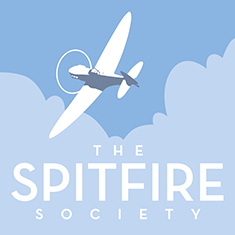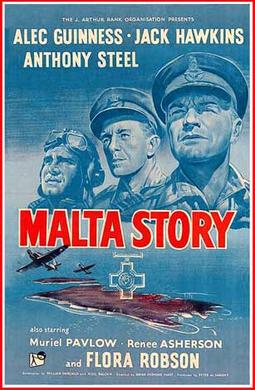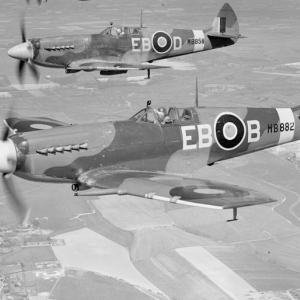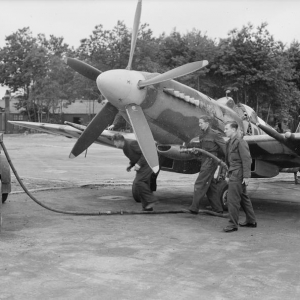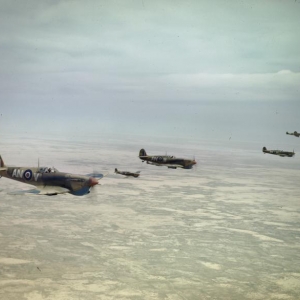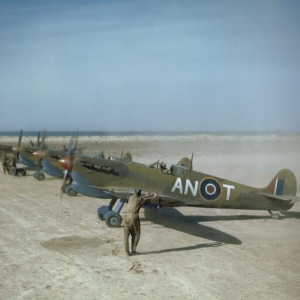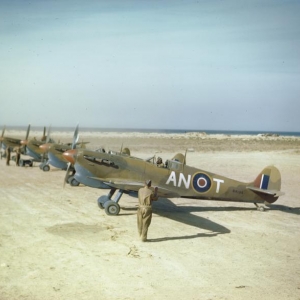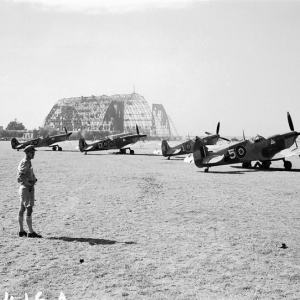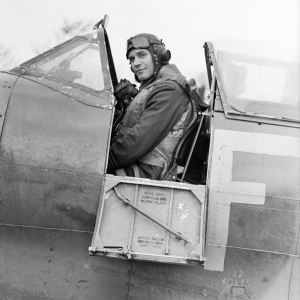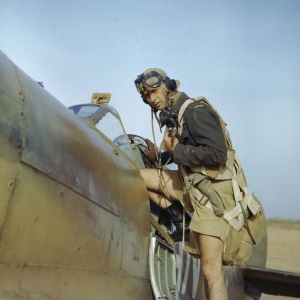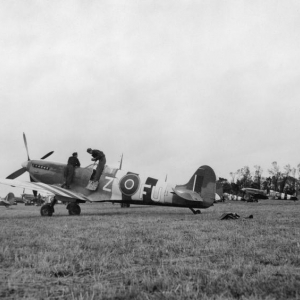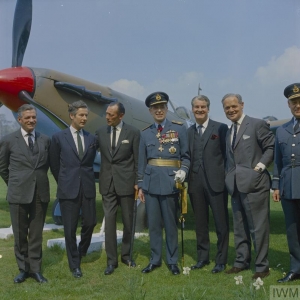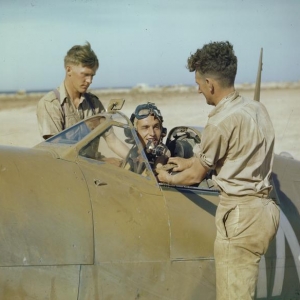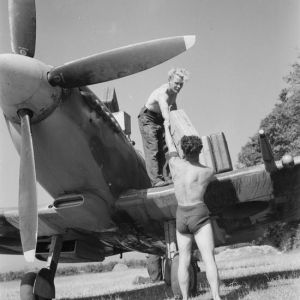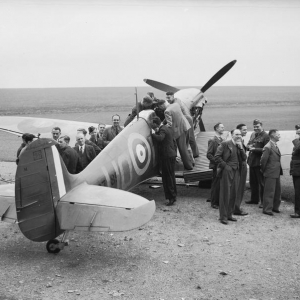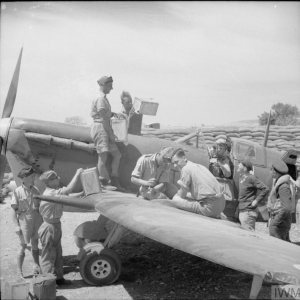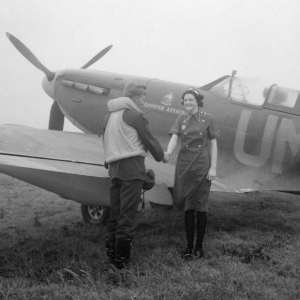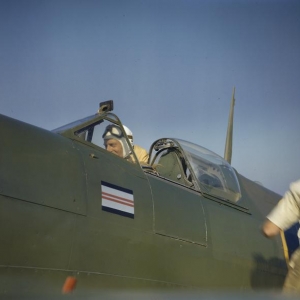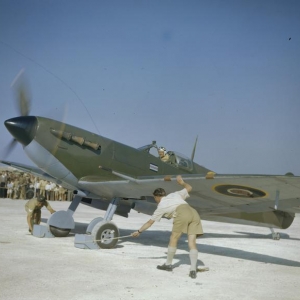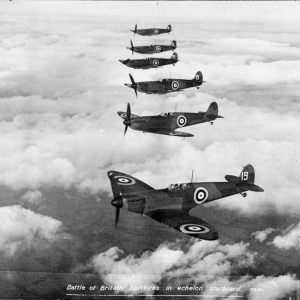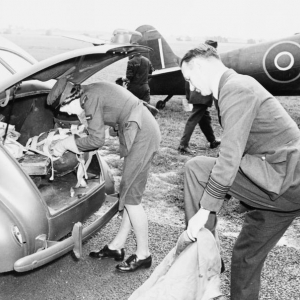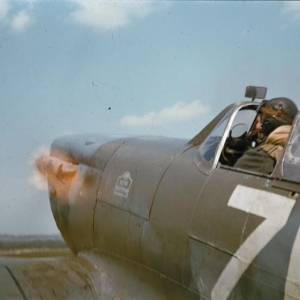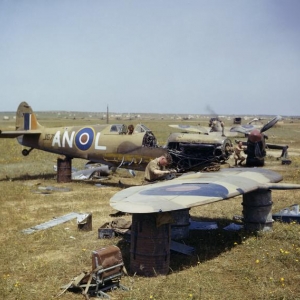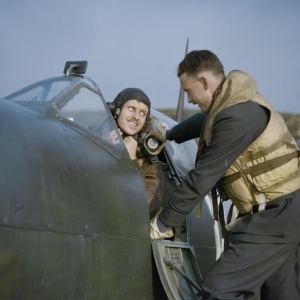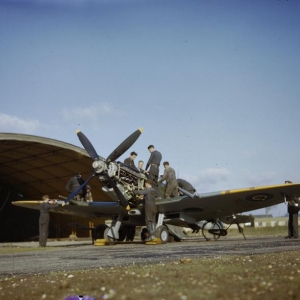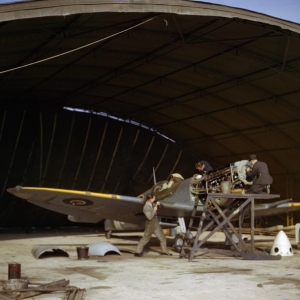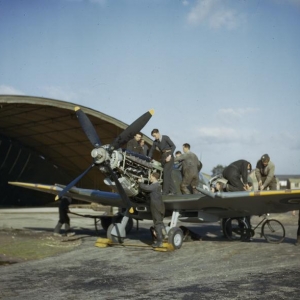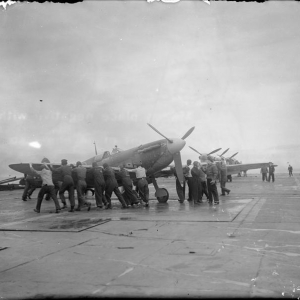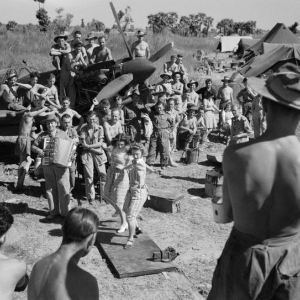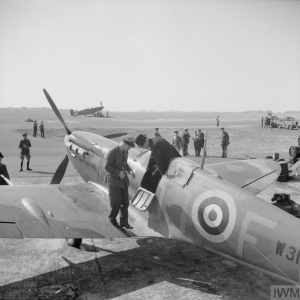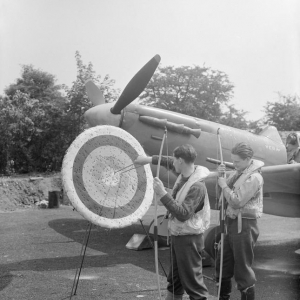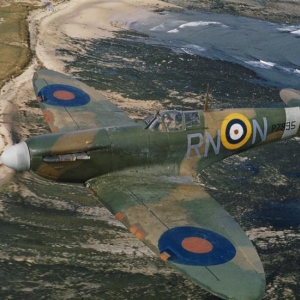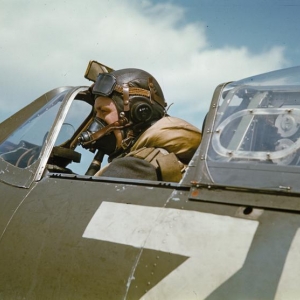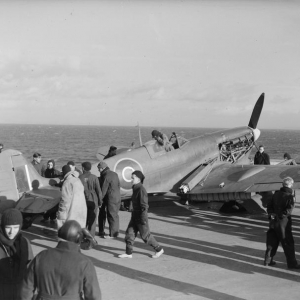History
 Your 'Spitfires' in Action - Thank You, Leeward Islands!© IWM (Art.IWM PST 8261)
Your 'Spitfires' in Action - Thank You, Leeward Islands!© IWM (Art.IWM PST 8261)
The Spitfire would of course would become the design most associated with R.J. Mitchell but the design and initial production period were far from successful or straight forward compared with its later legendary following of pilots and public alike. The origins began with the Type 224 of 1931, unfortunately it lacked the streamlined presence of the Schneider Trophy seaplanes and struggled to achieve the performance parameters set by the Air Ministry. After the aircraft’s rejection in 1934, Mitchell and his team revised the designed under the designation Type 300 which would result in a whole Ministry specification based around it and become known as the Spitfire. The prototype K5054 took off for the first time from Eastleigh on 5 March 1936 under the control of Chief Test Pilot (Mutt) Summers. Both performance and production would remain troublesome up until the Battle of Britain but its advanced features meant that it could be continuously improved during the War to counter competition from Luftwaffe fighters. It should also be remembered that Mitchell was diagnosed with cancer in 1933 and was in considerable pain up until his death on 11 June 1937.
The Battle of Britain would become the engagement that would solidify the iconic name, mythology and depiction of the Spitfire in the public imagination. Its speed and manoeuvrability enabled the aircraft to gain the upper hand with the Luftwaffe Me 109 and in combination with the Hurricane, radar and defence system won the Battle and laid the seeds for the future Allied victory. The Spitfire Fund was widely donated to by the British public and from around the world and films such as the First of the Few and Battle of Britain cemented its reputation as a war winning weapon.
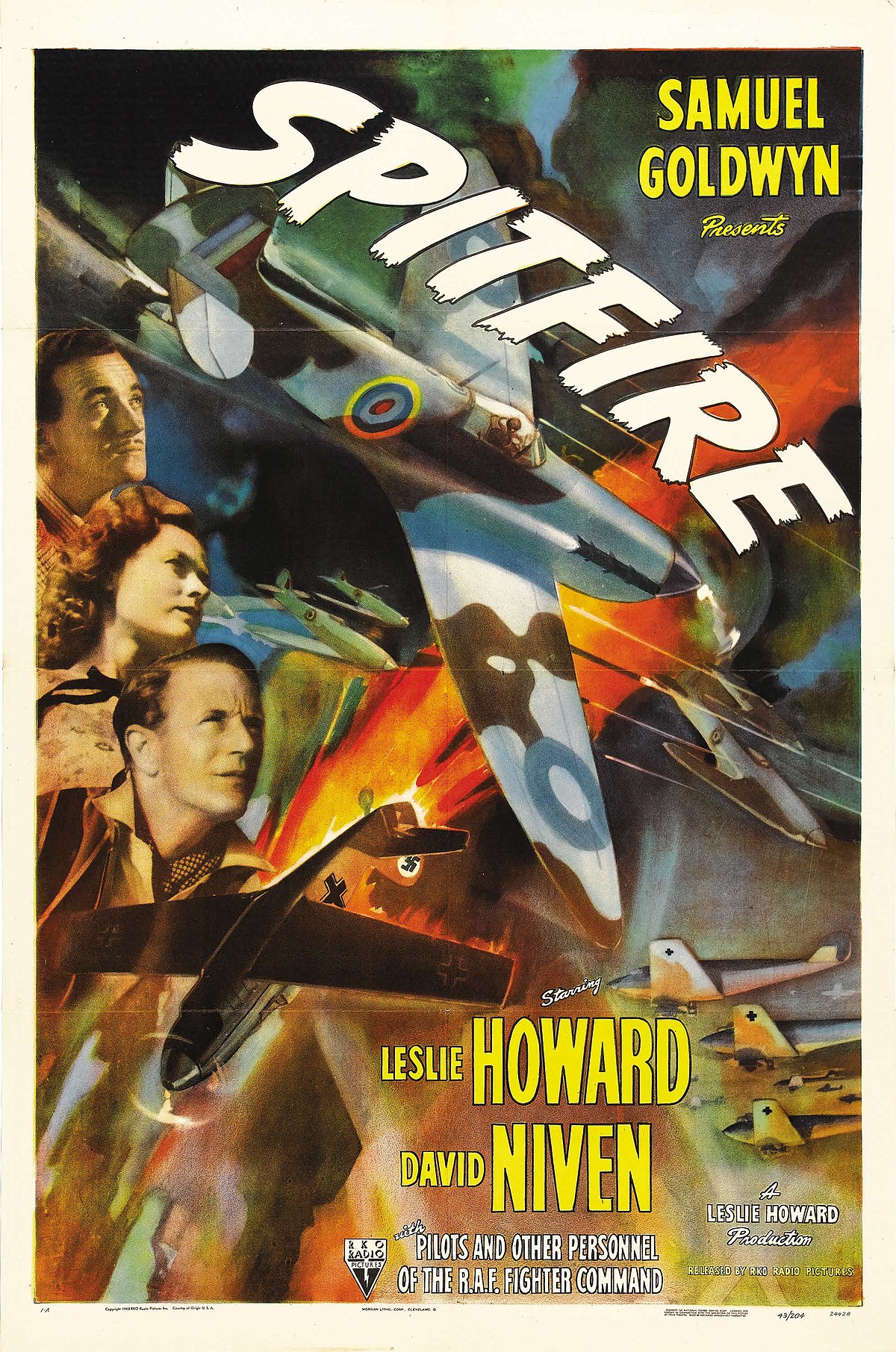
By RKO Radio Pictures - Source, Public Domain, Link
The Mk IV would be the first Spitfire to be installed with the Rolls-Royce Griffon engine. It didn’t go into full production but rather served as a development aircraft to sort out the airframe changes required to incorporate the additional weight and power of the new engine. The prototype first flew on 27 November 1941. The Mk V started operational service from early 1941 and were mostly constructed at Castle Bromwich. The Mk Va again was fitted with eight Browning machine guns. The Vb version once again incorporated two Hispano cannons and four Browning machine guns. As a result of the introduction of the FW 190 in August 1941, the Vb had the option of clipped wings to improve speed and handling at lower altitudes. The Mk Vc incorporated the universal wing which allowed a number of permutations in armaments to be carried in the wing and was also easier to manufacture. These versions of the Mk V included a Vokes air filter under the nose of the aircraft and many had a modified air filter which was more streamlined compared with the standard Vokes. Mk Vb and Vc (Trop), these were required for operation in North Africa, Middle East, Far East and Australia to cope with climatic and ground conditions associated with these areas. The mark of Spitfire would also be connected with the defence of Malta from the Italian and German air attack and represented in the film Malta Story.
PR IX and FR IX aircraft were modified Mk IXs created as an interim measure before the introduction of the PR XI. They were involved in reconnaissance missions that included Operation Chastise and Market Garden, capturing seminal images of these iconic events. The Type 387 as the PR X was an amalgam of a Mk VII airframe and PR XI wings, with the pressurised cockpit it could sustain heights of 40,000ft for photographic sorties. It operated in small numbers from May 1944 and led to the ultimate Spitfire photo reconnaissance Mk XIX. Types 365 and 370 (tropicalised) as the PR XI were an amalgamation of the Mks VII, VIII and IX. Produced from 1942 it was designed for tactical reconnaissance but could climb high to avoid enemy fighters but did not have a pressurised cockpit. PR XIII, photographic version created for low level sorties ahead of the D-Day invasion in 1944, including an armament of four Browning machine guns. Camera equipment fitted included one oblique F24 and two vertical F24s all in the fuselage. The Mk XIX became the ultimate photographic reconnaissance version of the Spitfire which incorporated a pressurised cockpit and the Mk XIV Griffon engine. It entered operational service in May 1944 and would only retire from frontline service with the RAF until April 1954.
Spitfire MK XIV, incorporated the two stage super charged Griffon engine which substantially improved performance at high altitudes but required considerable airframe changes to cope with the weight and power of the new engine. This included more fuel storage to deal with the higher fuel consumption, five blade propeller and greater cooling facilities. This mark of Spitfire would destroy more V-1s than any other Spitfire and German fighters avoided combat with it due to its performance. 610 Squadron was the first to operate the aircraft from December 1943.
Marks 21, 22 and 24, In order for the Spitfire to handle the increased power of the two stage supercharged Griffon engine, the wings were entirely re-designed and could handle speeds approaching the speed of sound. The first prototype first flew in July 1943 and the production example in March 1944. Initially it suffered from handling problems but these were smoothed out and entered squadron service in January 1945, fitted with four Hispano cannons. Mark 22 aircraft had the tear drop canopy and cut down rear fuselage. Only one regular squadron of the RAF operated the aircraft but did serve in the Royal Auxiliary Air Force until 1951. Mark 24, largely identical to the Spitfire 22 it had increased fuel capacity and had the ability to carry rocket projectiles and bomb armaments. Operational from 1946 and continued with the Hong Kong Auxiliary Air Force until 1955. It was twice as heavy and had twice the performance of the original Spitfire and represented the ultimate mark of this pedigree.
The success and affection of his final creation is commemorated principally through the Solent Sky Museum in Southampton, the Science Museum in London, Tangmere Aviation Museum and The Spitfire Society.

